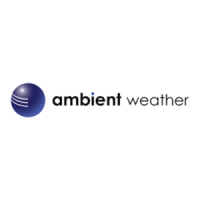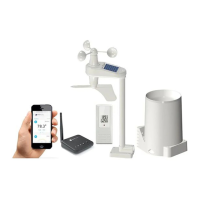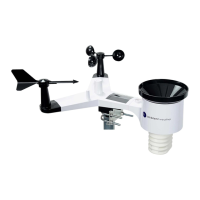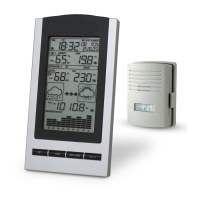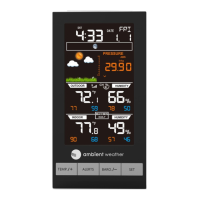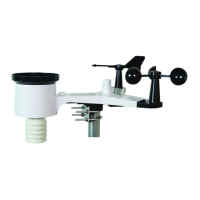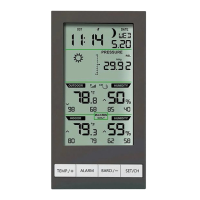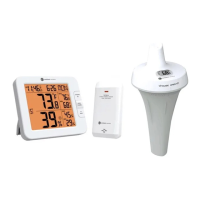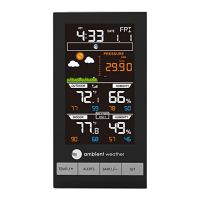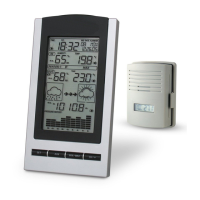(1) Temperature errors can occur when a sensor is placed too close to a heat source (such as a
building structure, the ground or trees).
To calibrate temperature, we recommend a mercury or red spirit (fluid) thermometer. Bi-metal
(dial) and digital thermometers (from other weather stations) are not a good source and have
their own margin of error. Using a local weather station in your area is also a poor source due
to changes in location, timing (airport weather stations are only updated once per hour) and
possible calibration errors (many official weather stations are not properly installed and
calibrated).
Place the sensor in a shaded, controlled environment next to the fluid thermometer, and allow
the sensor to stabilize for 48 hours. Compare this temperature to the fluid thermometer and
adjust the tablet to match the fluid thermometer.
(2) Humidity drifts over time due to contamination. In addition, location has an adverse effect on
humidity readings (installation over dirt vs. lawn for example).
Official stations recalibrate or replace humidity sensors on a yearly basis. Due to
manufacturing tolerances, the humidity is accurate to ± 5%. To improve this accuracy, the
indoor and outdoor humidity can be calibrated using an accurate source, such as a sling
psychrometer.
(3) The tablet displays two different pressures: absolute (measured) and relative (corrected to
sea-level).
To compare pressure conditions from one location to another, meteorologists’ correct pressure
to sea-level conditions. Because the air pressure decreases as you rise in altitude, the sea-level
corrected pressure (the pressure your location would be at if located at sea-level) is generally
higher than your measured pressure.
Thus, your absolute pressure may read 28.62 inHg (969 mb) at an altitude of 1000 feet (305
m), but the relative pressure is 30.00 inHg (1016 mb).
The standard sea-level pressure is 29.92 in Hg (1013 mb). This is the average sea-level
pressure around the world. Relative pressure measurements greater than 29.92 inHg (1013
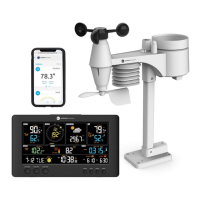
